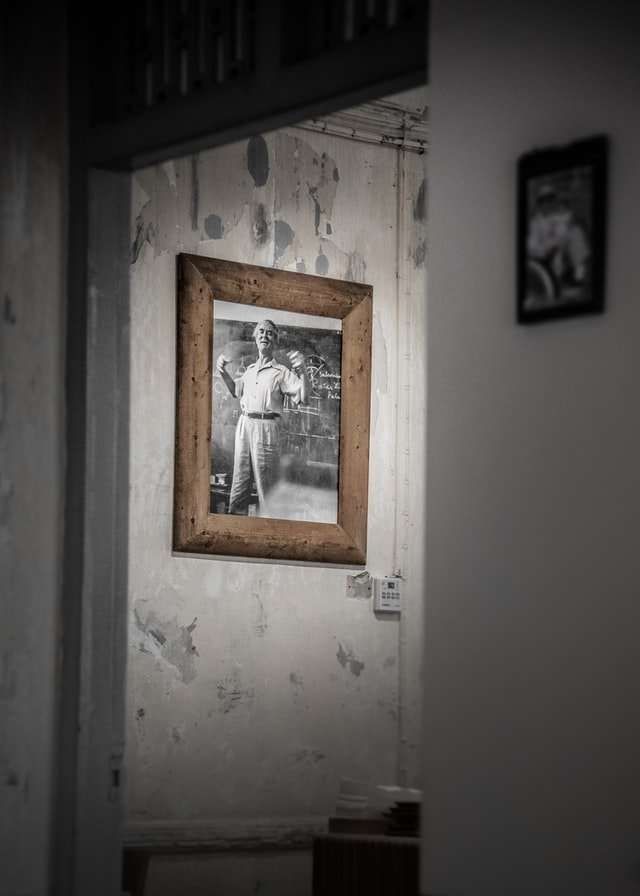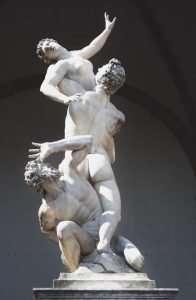Are you ready to downsize your art collection?
If the feeling of being tied down by the amount of art in your home is a little overwhelming, or if you have too much art that can’t seem to find a place, then minimalist art may be for you. Minimalist art has a simple, uncluttered style and often incorporates geometry or materials like concrete or metal.
Minimalist art is also very versatile in size and shape. Most minimalist artists create art lamps, sculptures and wall hangings that can be displayed in groups or alone.
In the past, to achieve this type of look required some expensive purchases; however, in recent years, many different types of pieces have become available for much less cost.
Here are some tips about how to start building a collection of minimalist art:
1. Start with a smaller piece. Instead of buying multiple large pieces right off the bat, think about starting with one small work that can be displayed as part of a group in an open space. It will add visual interest without taking over an entire room.
2. Think outside the box. A lot of people get caught up on traditional approaches toward displaying their art and miss out on some great opportunities to add pieces that might not fit into more traditional
Art is one of the most subjective topics to discuss. As art critics point out, it is extremely difficult to define. It can be used to express just about every emotion, and there are a number of diverse styles.
Minimalist art is really only defined by its name. This doesn’t mean that it is bad or less valuable than other forms of art, just that it’s a very specific style. Minimalist artists are concerned with showing only what they think is necessary in their work and eliminating everything else.
Trying to figure out if you like minimalist art is the first step in starting your own collection.
If you love minimalism, then go for it! You don’t have to worry about whether or not your tastes will fit in with other people’s; minimalism isn’t meant to appeal to everyone anyway.
If you’re not sure if you like it, then this might not be the best way for you to collect, but that doesn’t mean that you can’t enjoy some pieces from time to time, even if they aren’t part of your collection.
It’s easy enough to find minimalist art online. There are a lot of unique pieces for sale without breaking the bank, and there are also high-end pieces available at galleries
Minimalist art is not for everyone. It’s an acquired taste. The idea that a piece of art has to have a lot going on in it, and be visually complex, is a very common one. And yet there are many people who like minimalist art for its stark simplicity.
Minimalist art can help you to make your home more peaceful and calm, and also to make it feel larger than it really is. It’s a great way to include art in your decor without necessarily drawing attention to it or making the room feel cluttered.
TIP 1: Know What You Want From Your Minimalist Art Collection Before You Start Shopping
If you’re looking for some new minimalist art pieces, first think about what you’d want them to do in your home. Do you want them to be conversation starters? Do you want them to tell a story? Do you want something that will draw the eye? Or do you want something more subtle that will blend into the background? Only once you know what you need from your collection can you really start shopping effectively.
TIP 2: Find Some Pieces That Will Work For You On Multiple Levels
While minimalist art is usually simple, don’t assume that all minimalist art has just one message or meaning. In
Minimalist art is, in part, about stripping a painting back to its most basic elements. But the meaning and impact of minimalism can also be broadened by adding objects to an art collection.
Minimalism has been around for a long time, but it was the art world’s reaction to the impact of photography, rather than any inherent quality that made it popular. Minimalism appears, therefore, in all mediums, including sculpture and painting.
Artists began to explore the idea that their work didn’t need to be realistic – or even representational – in order to be considered art. They reduced their paintings down to the barest elements possible: flat planes of color with no detail or texture.
In an attempt to express his own feelings about truth and justice, artist Robert Indiana created his first piece of minimalist sculpture in 1966: a large block of white concrete with the word “love” carved into it. Over time this concept would become an iconic symbol for his work.
Minimalist paintings are created using just a few colors and simple brush strokes. Each work is usually monochromatic; using one main color with accents from another color or two for balance. There may be splashes of bright or contrasting colors used in the background
Minimalist art is best appreciated in a minimalist setting, but don’t be put off if you don’t have the walls for it yet. Even a single piece can inject some zen into your space!
1) Go with your instinct and buy what you like, not what’s hot. Buy what speaks to you, not what every other collector on Instagram is snapping up.
2) Look beyond the obvious names.
3) Choose pieces that fit together aesthetically instead of filling up your walls with standalone pieces.
4) Mix it up: hang smaller works together, or combine paintings and sculpture.
5) Be mindful of scale when hanging them high or low on the wall.
The style may be simple, but minimalist art isn’t just for minimalist spaces. It’s certainly an approach worth considering if you’re looking to lighten up—and lighten your load—in any room of the house.”
So, what’s minimalist art? In the broadest sense of the term, it’s any work of art that employs a visual language that intentionally reduces the number of elements, colors and/or textures in order to heighten the viewer’s perception.
A more specific definition is art created by artists who have been directly influenced by 20th century painters such as Hilma af Klint, Sol LeWitt and Frank Stella. Another way to define it is art that has been inspired by early 20th century geometric abstractions, yet another is art with a reductionist aesthetic.
Tone:informative
In the past, decoration of a home or business was usually not done to decorate the space but to reflect the class of its occupants. For example, a dining room in a wealthy family’s home was decorated with fine china and linens, and a dining room of working-class family would use everyday dishes to dine from. The type of art that adorned these rooms showed what social class it belonged to.
The current meaning for minimalist art is new; it has been popularized by galleries, museums, and magazines that feature this style as well as by artists who have created this type of work. Artisans who create these works are known as minimalists because their art does not include any extraneous elements. There are no embellishments on the paintings because they are focused on shape, color, and communication rather than detail.
Minimalist artwork has become popular in bedrooms and bathrooms where large wall areas can be used to accentuate large canvases. This artwork creates an ambience or feeling in the room. Rather than creating a specific feeling or emotion, minimalist art evokes a range of possible emotions or feelings in the viewer.
Minimalism is sometimes confused with abstract art. However, minimalists tend to use shapes and colors while abstract artists strive



